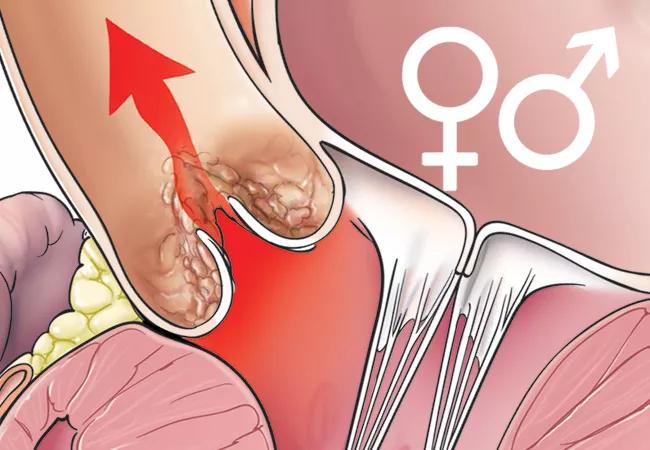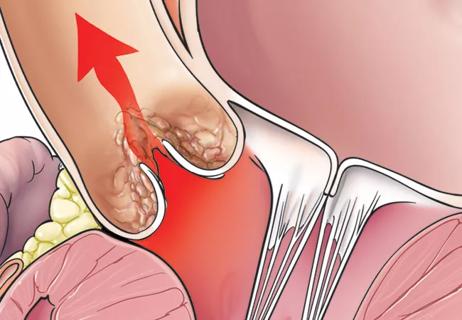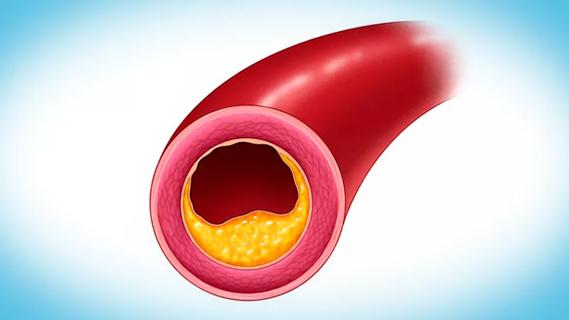Differences in pace of hemodynamic change signal need for sex-specific management

A new study by Cleveland Clinic investigators reveals distinct longitudinal echocardiographic and clinical profiles in women versus men with mild to moderate aortic stenosis (AS), underscoring the need for sex-specific management to optimize outcomes.
Advertisement
Cleveland Clinic is a non-profit academic medical center. Advertising on our site helps support our mission. We do not endorse non-Cleveland Clinic products or services. Policy
Published online in JACC: Cardiovascular Imaging, the large retrospective cohort study suggests that compared with men, women with mild to moderate AS are more likely to have:
“The faster hemodynamic progression in men may help explain their higher incidence of AVR compared with women,” says study co-author Venu Menon, MD, Section Head of Clinical Cardiology at Cleveland Clinic. “Our findings support the need for sex-specific clinical assessment and follow-up surveillance of early-stage aortic stenosis.”
Recent studies have increased awareness of persistently poor outcomes in patients with moderate AS. Additional studies have identified various sex-based differences in patients with AS, including in clinical profiles at diagnosis, onset and severity of symptoms, valvular progression, extent of ventricular remodeling and clinical outcomes. Overall data on these differences have been inconsistent, however, and these studies’ relevance to clinical practice is impacted by factors such as small sample size and limited follow-up.
In contrast, the new study used a large group of patients followed for a long time in real-world practice, with manual data collection through chart review and relevant multivariable-adjusted and subgroup analyses.
The investigators focused on data from patients aged 60 or older with mild to moderate native valve AS in the Cleveland Clinic echocardiography database from 2008 through mid-2016, with follow-up until 2018. Inclusion required an aortic valve area of 1.0 to 2.0 cm2 on index echocardiogram, and all patients had to have at least one subsequent echocardiogram at least two years later.
Advertisement
After exclusion of patients with bicuspid aortic valve or prior AVR, 2,549 patients (mean [±SD] age, 74 ± 7 years) were included in the analysis — 1,465 men (57.5%) and 1,084 women (42.5%). Prevalence of mild versus moderate AS was similar between the sexes, with 68.8% of the overall cohort having mild AS.
Primary outcomes were all-cause mortality and AVR. AS progression was the secondary outcome, as assessed by annualized changes in echocardiographic parameters, with analysis based on sex. Median follow-up was 5.7 years.
Primary endpoints. No differences in all-cause mortality emerged between the sexes, regardless of age, baseline disease severity, progression to severe AS or receipt of AVR.
The incidence of AVR was lower in women than in men, at 37.1 vs. 57.7 events per 1,000 person-years (incidence rate ratio = 0.64; 95% CI, 0.55-0.75; P<0.0001). That difference persisted after stratification for age and AS severity and irrespective of the presence of coronary artery disease or atrial fibrillation, which were less common in women. In multivariable-adjusted risk regression analysis, the adjusted hazard ratio for AVR at 10 years in women was 0.81 (95% CI, 0.67-0.91; P = 0.009).
AVR for symptomatic disease, such as angina, syncope or heart failure symptoms, was more likely in women than men, whereas men were more likely to undergo AVR for reduced LVEF and concomitant open-heart surgery. Hyperlipidemia, atrial fibrillation and coronary artery disease all were significantly more prevalent in men.
Advertisement
“The lower rate of AVR in women in our study aligns with intrinsic pathophysiologic differences between the sexes and suggests that sex-based differences in aortic stenosis progression translate into differing clinical outcomes,” notes study co-author Serge Harb, MD, staff cardiologist in the Section of Cardiovascular Imaging.
Secondary endpoint. Disease progression was significantly faster in men than in women on 1:1 propensity-matched analysis, as demonstrated by significantly greater increases in the median annualized change in mean gradient (2.10 vs. 1.15 mmHg/yr; P < 0.001) as well as maximum transvalvular velocity and left ventricular end-diastolic diameters.
“The annualized changes in transvalvular gradients in our study are similar to findings from previous research, but those findings were not sex-stratified,” says Dr. Harb. “Given the differences we observed in aortic stenosis progression, we hypothesize that there are sex-based variations in underlying mechanisms of ventricular adaptation to pressure overload that involve phenotypic pathways of ventricular remodeling and aortic valvular degeneration.”
“As these findings illustrate, clinicians must weigh sex-based differences when considering the potential for aortic stenosis progression,” Dr. Menon observes. “Future trials are needed to identify approaches to evaluation and management of aortic stenosis that can help mitigate the disparities in outcomes between women and men.”
“Previous studies show that, compared with men, women have less valvular calcification but more fibrosis with similar aortic stenosis severity,” adds Leslie Cho, MD, Director of the Women’s Cardiovascular Center at Cleveland Clinic. Additionally, she notes, in a study of 174 patients with moderate to severe AS followed every six months with extensive imaging and biomarkers, women were more likely to be symptomatic with the same severity of AS compared with men. “These findings, along with the current paper, call for sex-specific thresholds to define severe aortic stenosis.”
Advertisement
Advertisement

Experience and strength in both SAVR and TAVR make for the best patient options and outcomes

Ideal protocols feature frequent monitoring, high-quality imaging and an inclusive team approach

Age and other factors figure into the choice among SAVR, TAVR, Ross, Ozaki and more

Optimally timed valve replacement depends on an expert approach to nuanced presentations

Aortic valve replacement is best option for lowering mortality in this high-risk population

Large longitudinal study supports earlier intervention over clinical surveillance

Questions remain following late mortality signal from a retrospective cohort study

Support for a TAVR-first approach in patients with concurrent valve and coronary disease